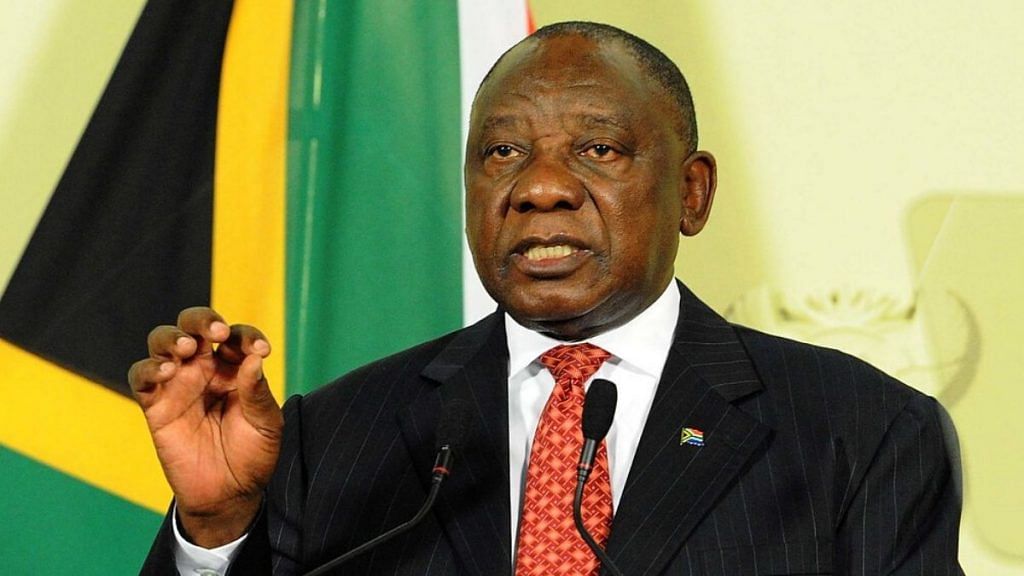Bengaluru: India and South Africa implemented stringent lockdown measures to contain the spread of Covid-19 at around the same time. But not accounting for differences in socio-political, economic and population structures, the South African strategy of aggressive testing before and during the lockdown seems to have paid off, as the nation is now recording far fewer daily cases, despite being in lockdown for roughly the same period of time as India.
India went into a national lockdown on 24 March, 54 days after the country’s first confirmed case (30 January), while South Africa did so on 26 March, 21 days after its first case (5 March).
As of Monday morning, India has 17,615 active cases with 559 deaths while South Africa in comparison has just 3,158 cases with 54 deaths.
Impact of lockdown
While India and South Africa are not entirely comparable, owing to population demographic variations, there are lessons from the African nation’s response to the pandemic.
On the day the Indian lockdown commenced, the country had a total of 536 cases with 18 deaths. By contrast, South Africa had already reported 927 cases but no deaths on the day of its lockdown. The African country’s first reported death came the next day as case numbers crossed the 1,000 mark.
Nearly a month on from their respective lockdowns, India has had 17,079 newer cases while South Africa has recorded 2231 newer cases.
During the period of the lockdown so far, India has seen 541 new deaths, while S. Africa has had only 54.
But the testing data shows that now, India is recording upwards of 500 new cases each day, while South Africa is averaging at about 150 new cases a day. The highest spike South Africa saw was on the first day of its lockdown — a mere 243 new cases.
The key difference between the two countries has been the testing strategy.
India continued testing slowly, expanding the inclusion criteria in steps, even after the lockdown. New Delhi began testing those with symptoms but without travel history only on 9 April, a full 70 days after the first confirmed case and 15 days after the national lockdown began.
South Africa went the exact opposite way, ramping up testing and aggressively chasing the whole population. On day 15 of its national lockdown, the country had conducted 64,000 tests, a large part of which was done by the private sector.
Also read: Boris Johnson won’t have to pay hospital bills. And it’s not because he is PM
How SA kept numbers low
South Africa went into lockdown in 21 days of detecting its first patient. India had only three confirmed cases on 20 February, which was 21 days of its first detected case on 30 January.
By contrast, South Africa had already detected 900 cases before a full lockdown was announced. The increased number of cases, as compared to India, is likely due to increased, methodical testing.
South Africa tested rigorously.
By 7 February, the disease had not even entered the country, but its National Institute for Communicable Diseases had already conducted 42 tests, all of which were negative. By mid-February, again before the first positive case was confirmed, the government announced free testing at all state hospitals.
In just a week after its first case on 5 March, South Africa had already tested over 47,000 people. It now has the capacity to test 36,000 people a day through drive through test centres as well as at clinics and hospitals.
In all, as of 20 April, South Africa has conducted over 1,14,000 tests so far, within 50 days of the disease being in the country. The testing frequency measures at 1,934 tests per million people. By contrast, India has conducted over 4,00,000 tests — larger in number but only 291 tests per million, in the past 80 days that the disease has been in the country.
Also read: How Trump is dividing America as virus lockdown begins to hit his re-election campaign
Stages of lockdown
While the South African lockdown commenced on 26 March, President Cyril Ramaphosa had declared a national emergency and issued travel restrictions from 15 March.
Schools were closed down on 18 March, 13 days after the first case. On the same day, all government and parliamentary sessions and meetings were suspended.
A day later on 19 March, fearing panic buying, the government enforced price controls and limits on items, and price gougers were punished through a hefty fine or a year in jail.
Those who violated travel and transit bans were heavily fined too. Within seven days of lockdown, over 2,200 people were arrested for violating social distancing procedures. Even a minister was put on leave for two months for violating lockdown regulations.
But just like in India, the police in South Africa have come under criticism for excessive use of force. Nine people have reportedly died from police brutality so far.
Also read: The curious case of South Asian countries and coronavirus
